How to build YOUR frugal, real food kitchen. Eating healthy and saving money can be overwhelming. Here is how we do it: 6 questions we ask and apply to each food group.
You know who’s business it is what you eat? NO ONE’S. What you keep in your kitchen and put in your mouth is completely personal. It’s one of the few choices we make that no one else can really control.
And yet, I am freakishly interested in what other people buy. Take the grocery store for example. If your food is on the conveyer belt in front of mine, there is a 100% chance I am scoping it out. What did you buy? What kind of dinners do you make with that food? Why did you choose that flavor popsicle?
I am also silently comparing our purchases. Did they buy more vegetables than me? Is their bread healthier than mine? Why did they choose the almond milk – is it a fad or an allergy? DON’T JUDGE ME, okay? I’m not judging my unsuspecting grocery store comrade. I’m observing. There’s a very subtle but important difference.
[bctt tweet=”I’m not judging. I’m observing. There’s a very subtle but important difference.” username=”@CheapskateCook”]
What you choose to place on the conveyer belt is your personal choice. We each have to find what works for us based on our priorities and budget. Building a pantry that is both healthy and frugal is no easy feat. However, I’m starting to crack the code.
My goal is to find a healthy balance in 6 key areas:
- Health – what are the most healthy options?
- Out of the healthy options, what are the least expensive?
- Do we like this food? No reason to buy it if no one will eat it. Kind of like kale.
- How much time will it take to prepare whatever I’m buying.
- What are our current diet needs – more protein, less gluten, dairy-free?
- What purchase options do I have – local grocery stores, bulk orders, online, farmer’s market, or the local farm pick-up.
That sounds like a lot, but over the years I’ve honed our purchases to answer those questions in the best ways I can right now. So I thought I’d share them with you.
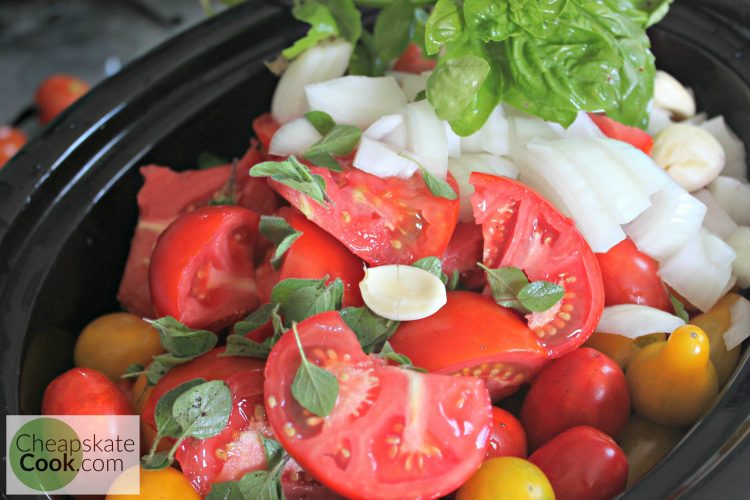
How to Build a Healthy, Frugal Pantry
Think of it as your chance to observe what we put on our grocery conveyor belt. Over a couple of posts I’ll go through each basic food group:
The goal here is for you to take these observations and choose what might work for you.
To help you do that, I’ll break down:
- What we buy
- Why we buy it (Is it especially healthy? Extremely inexpensive?)
- How we get the best price
It’ll be simple, quick, and packed with tips for how you can make it work for you. What you put in your kitchen is no one else’s business. But like my unsuspecting grocery store companions, we can learn a lot from how other people stock their pantry. And you’re welcome to observe or judge. I’ll never know the difference.
Why Real Food?
There are a lot of reasons why we started eating healthy – ranging from growing up on a farm, raising dairy goats, to food allergies and health problems.
One of the ways I learned to value real food was reading the book, Nourishing Traditions (affiliate link).
While I don’t agree with everything in it, simply reading the book and learning where our food used to come from and how it was prepared gave me a deep respect for real food.
We had a very tight budget, but we learned how to feed our family real food.
What You Can Do Now:
- What food group do you struggle with most? Comment below! This will help me know which groups to really focus on and how I can serve you best. (For us, it’s meat – there is such a difference between organic and conventional prices!)
- We also share cheap (like, actually cheap), real food menu plans every month for FREE with our email subscribers. Get the next one here.
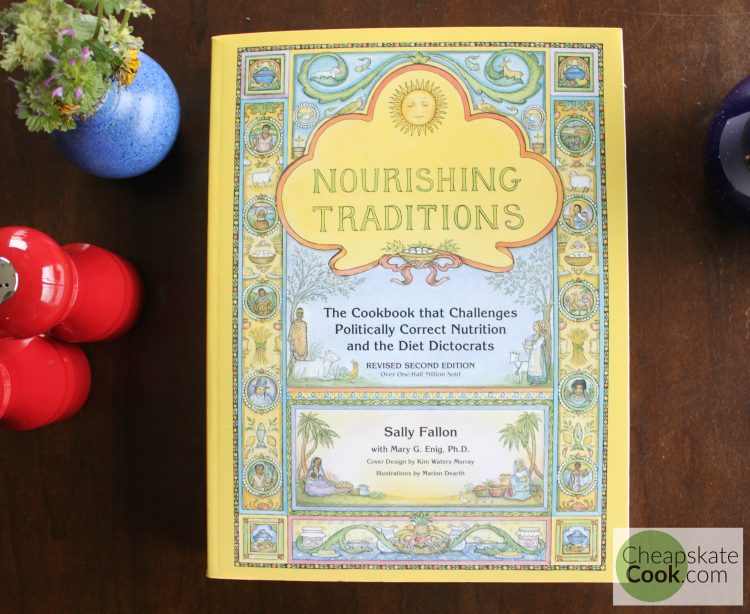

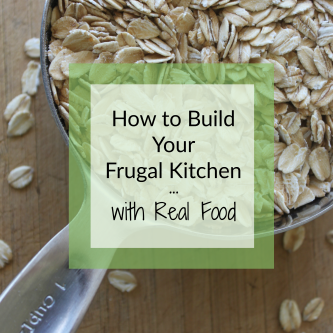
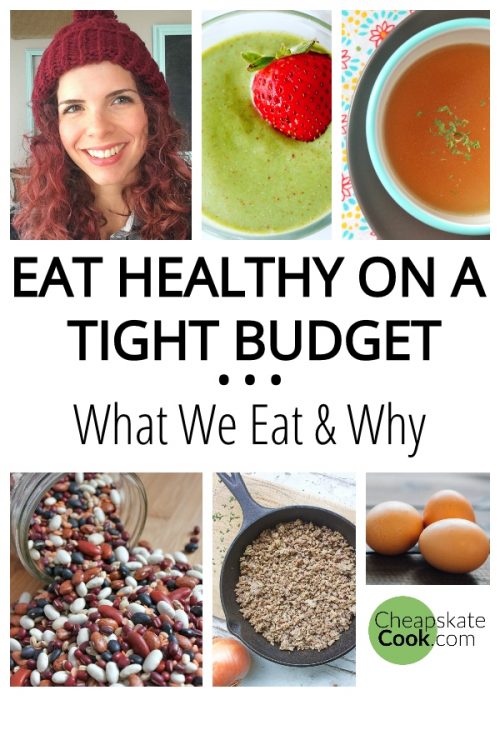
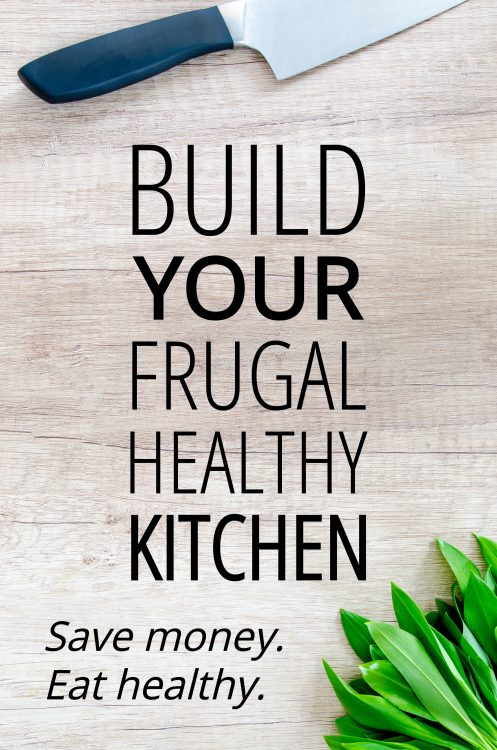
Buy ingredients, not processed items. When my brother comes over and says, wow you have nothing to eat in the house, I know Im doing well. Theres ingredients for meals here, not garbage.
Buy multiples. One for the fridge to use, one for the cupboard. Never be at the mercy of retail, only buy cheap.
Buy in bulk, splitting with friends if needed.
Learn to drink water, without koolaid drops or stevia flavored drops. We drink room temp water actually.
my struggle is with the fact that i’m vegan, and allergy-free (dairy, wheat, gluten, soy) – OY VEY!! and to try and do it all on a budget!
That IS tricky! How long have you been eating this way?
I struggle most with the grain group. white rice and white pasta are so cheap. It’s hard to justify the extra cost of whole wheat pasta. It’s not on sale as often. And, I have to convince my family to eat the whole wheat, which is another struggle. They like the the taste of white rice and pasta better than the healthier versions.
Yes! I feel the same way about white rice vs. brown rice. It’s hard to retrain your taste buds.
I have been rebuilding my inner ecosystem and doing Donna Gate’s Body ecology diet. Still learning and getting in my grooves. Excited to learn to spend less from you!
Way to go on the new journey! That’s so important. Let me know if I can help!